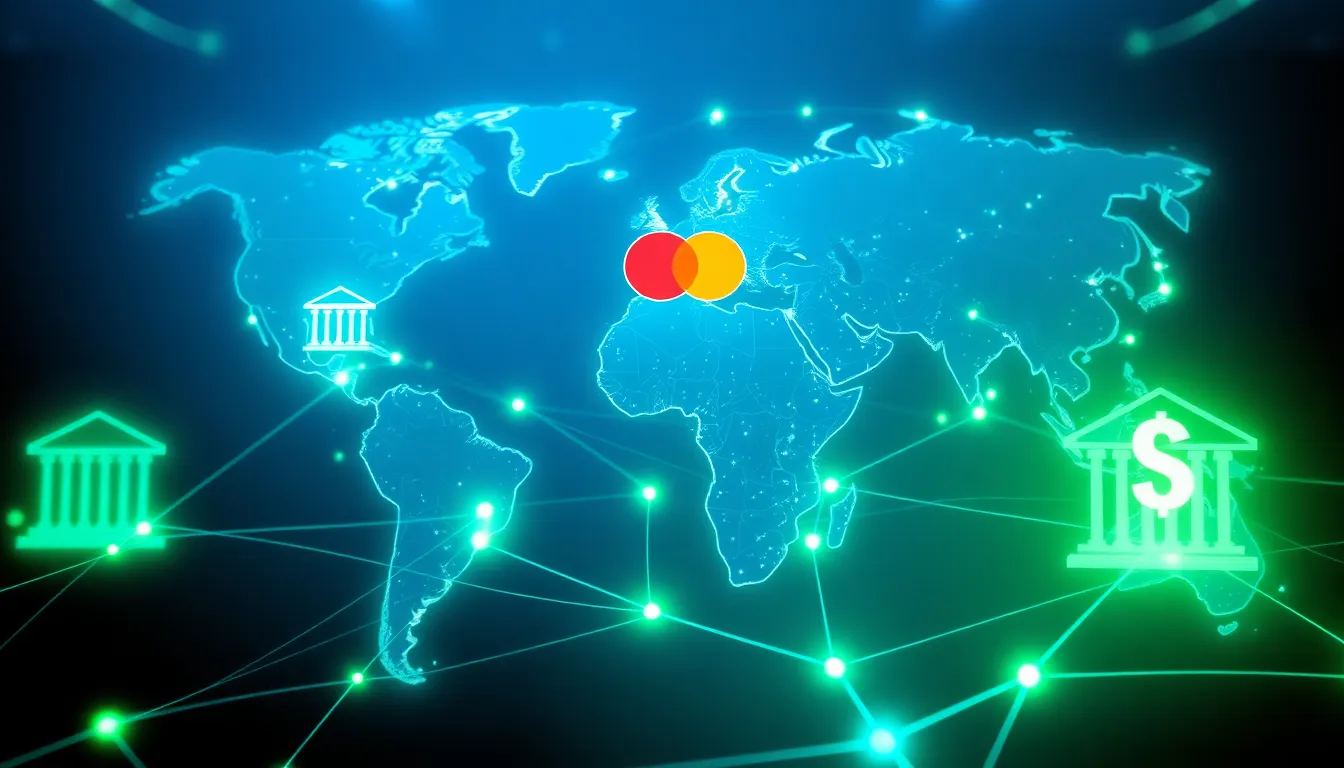The Bank of North Dakota Taps Fiserv to Launch State-Backed ‘Roughrider Coin’, marking a groundbreaking move that positions North Dakota at the forefront of digital currency innovation under the new GENIUS Act framework. This U.S. dollar-backed stablecoin, set for 2026 release, leverages the robust Solana blockchain and Fiserv’s FIUSD platform to modernize financial services for the state’s banks and credit unions.
Key Implications
- State-Level Digital Asset Adoption North Dakota’s Roughrider Coin, formally authorized under the national GENIUS Act framework, follows Wyoming’s precedent, establishing a robust model for state-issued, dollar-backed stablecoins and signaling a broader trend towards regulated digital currencies in the U.S.
- Enhanced Financial Infrastructure and Efficiency Built on Solana and utilizing Fiserv’s FIUSD platform, the Roughrider Coin aims to modernize banking operations for North Dakota’s financial institutions, enabling faster transaction settlements, improved treasury management, and increased efficiency, ultimately benefiting residents and local economic fluidity.
- Industry Validation and Global Integration The partnership with Fiserv for the first state-issued stablecoin on its FIUSD platform, coupled with FIUSD’s rapid integration into Mastercard’s global network, validates the potential of regulated digital assets, reducing entry barriers for financial institutions and fostering a scalable ecosystem for global digital transactions.

North Dakota to Unveil Solana-Powered, Dollar-Backed Stablecoin by 2026
The financial landscape is poised for a significant evolution as the Bank of North Dakota Taps Fiserv to Launch State-Backed ‘Roughrider Coin’. This groundbreaking initiative, set for release in 2026, positions North Dakota at the forefront of digital currency innovation. The Roughrider Coin will operate as a U.S. dollar-backed stablecoin, built on the robust Solana blockchain. Its introduction marks a critical milestone: it will be the first state-issued stablecoin to specifically utilize the Fiserv FIUSD platform, underscoring a commitment to secure and compliant digital financial services. This new digital asset will be exclusively available to North Dakota’s banks and credit unions, offering them a modern tool to enhance their financial offerings.
A stablecoin, by definition, is a type of cryptocurrency designed to maintain a stable value, typically pegged to a fiat currency like the U.S. dollar. In the case of the Roughrider Coin, this means it will be backed one-to-one with U.S. dollars, ensuring its value remains consistent and predictable. This direct backing mitigates the volatility often associated with other cryptocurrencies, making it an attractive option for traditional financial institutions and their customers. The primary purpose of stablecoins is to provide the benefits of digital assets, such as speed and efficiency, without the speculative price swings.
The choice of the Solana blockchain as the underlying technology for the Roughrider Coin is particularly strategic. Solana is renowned for its high transaction throughput and low latency, making it an ideal platform for high-volume financial operations. This infrastructure ensures that transactions involving the Roughrider Coin can be processed quickly and efficiently, facilitating seamless integration into existing banking systems. Furthermore, Solana’s architecture is designed to handle a large number of users and transactions concurrently, providing a scalable solution for a state-backed digital currency. Users can also learn more about how blockchain transaction fees are managed on such networks, influencing operational costs.
Understanding Roughrider Coin’s Core Mechanics and Infrastructure
The launch of the Roughrider Coin in 2026 represents a carefully planned integration of digital currency into a traditional financial ecosystem. Its design as a U.S. dollar-backed stablecoin means that for every Roughrider Coin issued, an equivalent U.S. dollar amount will be held in reserve. This transparent and verifiable backing is crucial for building trust and ensuring the stability required for widespread adoption within regulated financial environments. Such a mechanism provides confidence to both financial institutions and their clients, knowing the digital asset’s value is always tied to tangible reserves.
Utilizing the Solana blockchain provides the technical backbone necessary for a modern, efficient digital currency. Solana’s innovative proof-of-history consensus mechanism, combined with its proof-of-stake system, allows it to achieve remarkable transaction speeds and low costs compared to many other blockchain networks. This makes the Roughrider Coin highly practical for everyday financial transactions and inter-bank settlements within North Dakota. The efficiency offered by Solana can potentially reduce operational overhead for participating banks and credit unions, streamlining various financial processes.
A Landmark Achievement on the Fiserv FIUSD Platform
The Roughrider Coin’s distinction as the first state-issued stablecoin to specifically use the Fiserv FIUSD platform highlights a significant leap in financial technology integration. Fiserv is a global leader in financial services technology, providing solutions that enable banks, credit unions, and other financial institutions to operate effectively. The FIUSD platform likely offers a comprehensive suite of services, including compliance, security protocols, and seamless integration capabilities with existing core banking systems. This partnership ensures that the Roughrider Coin adheres to stringent regulatory requirements and robust security standards from its inception.
This pioneering move by the Bank of North Dakota, collaborating with Fiserv, could serve as a blueprint for other states considering their own digital currency initiatives. It demonstrates a practical application of blockchain technology within a regulated state financial system, moving beyond theoretical discussions to tangible implementation. The choice of a well-established financial technology partner like Fiserv adds an additional layer of credibility and operational expertise to the Roughrider Coin project, mitigating many of the risks typically associated with emerging digital assets. This ensures a smooth rollout and reliable operation.
Crucially, the coin will be available to North Dakota’s banks and credit unions, empowering these local financial institutions with a new digital asset. This access allows them to explore innovative use cases, such as faster payment processing, enhanced treasury management, and potentially new customer-facing products. For instance, a credit union could offer its members immediate digital transfers within the state using Roughrider Coin, bypassing traditional banking hours and delays. This availability underscores the state’s intent to foster financial innovation at the local level, providing its institutions with tools to remain competitive and efficient in an increasingly digital world. The Bank of North Dakota Taps Fiserv to Launch State-Backed ‘Roughrider Coin’ is not just about a new currency; it’s about upgrading the state’s financial infrastructure.

Fiserv’s FIUSD Platform Achieves June 2025 Mastercard Integration
Fiserv’s FIUSD digital asset platform, launched in June 2025, swiftly achieved integration with Mastercard’s expansive global payments network. This strategic early move establishes a robust foundational infrastructure. It will empower initiatives such as the state-backed Roughrider Coin from the Bank of North Dakota, aiming to significantly enhance inter-bank and global transactions. This rapid deployment underscores Fiserv’s proactive vision and readiness within the digital asset landscape.
The immediate integration of the FIUSD platform into Mastercard’s network provides a significant pathway for digital asset utility. It effectively bridges traditional financial systems with emerging blockchain technologies. This development is crucial for fostering wider acceptance and practical application of dollar-backed digital assets across diverse financial ecosystems. Early adoption by a major payment giant like Mastercard highlights the platform’s impressive potential for widespread reach and operational impact right from its inception.
Fiserv’s FIUSD Platform: Powering Digital Assets for Banks
Fiserv officially launched its FIUSD digital asset platform in June 2025. This platform represents a critical advancement in the evolution of digital finance. It is specifically engineered to enable banks and credit unions to issue and transfer dollar-backed digital assets. This capability provides a new avenue for financial institutions to innovate their service offerings. It also allows them to participate actively in the burgeoning digital economy, all while prioritizing security, compliance, and seamless integration with existing financial infrastructures.
The core purpose of the FIUSD platform is to facilitate the efficient and secure movement of digital dollars. These digital assets are fully collateralized, ensuring stability and trust for users and institutions alike. By providing a regulated and controlled environment, Fiserv aims to mitigate many of the risks typically associated with nascent digital currencies. The platform supports a variety of use cases, from instantaneous settlements to enhanced liquidity management for financial institutions, simplifying cross-border payments by reducing delays and associated costs.
Mastercard Integration: Global Reach for Digital Transactions
A pivotal development for the FIUSD platform was its integration into Mastercard’s global payments network, also in June 2025. This collaboration is more than just a technical connection; it represents a significant validation of Fiserv’s infrastructure and its potential reach. Mastercard’s network is renowned for its immense scale, connecting millions of merchants, banks, and consumers worldwide. Integrating a digital asset platform into such a network immediately grants it unparalleled access and operational capabilities. This partnership solidifies FIUSD’s position as a key player in the digital asset space.
The direct integration with Mastercard effectively leverages existing, trusted payment rails for digital asset transactions. This means financial institutions utilizing FIUSD can potentially connect to a vast ecosystem of global payment participants without needing to build new, complex infrastructure. Such an integration significantly reduces barriers to entry for banks and credit unions looking to engage with digital assets. It also accelerates the pace at which these assets can be used for everyday transactions and international money movement, enhancing the efficiency of digital asset transactions.
Roughrider Coin: Leveraging Established Infrastructure
The state-backed ‘Roughrider Coin,’ initiated by the Bank of North Dakota, is poised to directly benefit from this pre-existing and robust digital asset infrastructure. The coin will be interoperable with other assets residing on the FIUSD platform. This interoperability is a critical feature, ensuring that the Roughrider Coin can seamlessly interact within a broader digital asset ecosystem. This enhances its utility and liquidity, making it more attractive for various financial operations. The Bank of North Dakota’s decision to tap Fiserv for this initiative highlights the trust placed in Fiserv’s established capabilities.
Fiserv’s ambitious goal for the Roughrider Coin is clear: to increase bank-to-bank transactions and encourage global money movement. By leveraging the secure and efficient FIUSD platform, backed by Mastercard’s network, the Roughrider Coin can facilitate faster, more transparent, and potentially lower-cost transactions between financial institutions. This capability extends beyond domestic transfers, paving the way for more efficient international remittances and cross-border trade settlements. The underlying infrastructure ensures that the Roughrider Coin operates within a framework designed for high volume and reliability.
Empowering Financial Institutions with Dollar-Backed Digital Assets
The foundational design of Fiserv’s FIUSD platform specifically caters to the needs of banks and credit unions. It provides them with the essential tools and infrastructure to confidently issue and transfer dollar-backed digital assets. This empowers these traditional financial entities to remain competitive and relevant in an increasingly digitized financial landscape. They can offer innovative services to their customers, leveraging the benefits of blockchain technology without the complexities of building proprietary systems from scratch. The platform acts as a crucial bridge, enabling established institutions to embrace digital transformation.
For financial institutions, this translates into new opportunities for enhanced operational efficiency and potentially new revenue streams. Issuing their own dollar-backed digital assets allows for greater control over transaction flows and can potentially reduce reliance on third-party intermediaries for certain services. The ability to transfer these assets seamlessly across the Mastercard network also opens up new possibilities for inter-bank settlements and corporate treasury management. This strategic capability positions banks and credit unions at the forefront of digital asset innovation, offering robust and reliable digital currency solutions to their clientele.
Ultimately, the FIUSD platform, with its early and significant integration with Mastercard, offers a compelling proposition for financial institutions. It simplifies their entry into the digital asset space while ensuring security, interoperability, and global reach. This comprehensive ecosystem not only supports the ambitious goals of projects like the Bank of North Dakota’s Roughrider Coin but also creates a scalable, future-proof framework for the broader adoption of regulated digital assets.

GENIUS Act Creates National Stablecoin Framework; Wyoming Launches First State Token
The landscape of digital currency in the United States is rapidly evolving, driven by legislative action and pioneering state initiatives. A pivotal moment arrived with the GENIUS Act, passed in July 2025, establishing the first national framework for payment stablecoins. This crucial legislation provides a standardized regulatory environment, paving the way for states to innovate within the digital asset space.
Following swiftly, individual states began capitalizing on this new framework. North Dakota’s Roughrider Coin initiative, formally authorized in October 2025, represents a significant step. It aligns directly with the directives of the GENIUS Act, positioning it within a robust national framework for payment stablecoins. This proactive approach follows Wyoming’s earlier stablecoin debut, demonstrating a clear trend toward state-backed digital currencies.
The Precedent Set by Wyoming’s Frontier Stable Token
Before North Dakota’s move, Wyoming had already made headlines in the digital asset sector. In August 2025, Wyoming introduced its Frontier Stable Token (FRNT). This groundbreaking initiative was launched through a strategic partnership between the Wyoming Stable Token Commission and LayerZero. Wyoming’s FRNT served as a critical early adopter, showcasing the potential for state-issued digital assets.
This debut established a vital precedent for the viability and integration of state-level digital currencies within the broader financial ecosystem. Wyoming’s proactive stance demonstrated how states could leverage blockchain technology to create stable, regulated digital assets. Their success provided valuable insights and confidence for other states considering similar ventures.
The timeline of these events highlights a converging national trend. The GENIUS Act laid the legislative groundwork in July 2025. Just one month later, Wyoming introduced its Frontier Stable Token (FRNT) in August 2025. Then, in October 2025, the North Dakota Industrial Commission formally authorized the development of Roughrider Coin. This rapid succession of events underscores a growing momentum in state-level digital currency adoption.
North Dakota’s Roughrider Coin: Innovation for Residents
The Bank of North Dakota Taps Fiserv to Launch State-Backed ‘Roughrider Coin’, marking a significant milestone for financial innovation in the state. The North Dakota Industrial Commission formally authorized the Bank of North Dakota to begin developing a beta version of Roughrider Coin in October 2025. This authorization enables the state to explore the practical applications and benefits of a state-issued digital asset.
Governor Kelly Armstrong emphasized the direct advantages for North Dakota residents. He stated that the digital asset will improve efficiency and quality control in the banking sector, directly benefiting the local population. This improvement could manifest through faster transaction settlements, reduced processing costs, and enhanced transparency in financial operations. Such advancements aim to streamline everyday banking experiences and boost economic fluidity within the state.
State-issued stablecoins, such as Roughrider Coin, combine the best aspects of traditional and innovative financial systems. They offer the speed, efficiency, and accessibility of blockchain technology with the stability of traditional financial assets. These digital currencies are designed to operate under the same stringent regulations that govern conventional financial instruments, ensuring security and trustworthiness. Understanding how blockchain technology operates, including aspects like blockchain transaction fees, is key to appreciating these benefits.
The Promise of State-Backed Digital Currencies
The emergence of state-issued stablecoins like North Dakota’s Roughrider Coin signals a new era for financial services. By offering the inherent advantages of blockchain – such as immutable records and near-instantaneous transfers – these tokens promise significant improvements over legacy systems. Crucially, their direct backing by state entities ensures a level of stability and trust that privately issued cryptocurrencies often lack.
The regulatory backing provided by the GENIUS Act establishes a secure and predictable environment for these innovations. Furthermore, Wyoming’s successful launch of FRNT serves as a robust precedent, confirming the operational feasibility and public acceptance of state-backed digital tokens. This dual support system provides a strong foundation for the initiative as the Bank of North Dakota Taps Fiserv to Launch State-Backed ‘Roughrider Coin’.
Ultimately, these developments point towards a future where digital assets are integrated seamlessly into the national financial infrastructure. State-issued stablecoins offer a pragmatic pathway to harness technological advancements for public good, driving efficiency, accessibility, and improved financial services for residents while maintaining regulatory compliance and stability.
Featured image generated using Flux AI
Decrypt: “Bank of North Dakota Taps Fiserv to Launch State-Backed ‘Roughrider Coin'”
